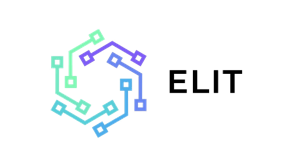APPLICATION OF ARTIFICIAL NEURON NETWORK AND FUZZY INFERENCE IN THE HOUSEPLANT WATERING INTELLIGENT SYSTEM
Abstract
Background. The automation of modern technologies and the widespread adoption of smart Internet of Things (IoT) devices not only provide an opportunity to optimize routine processes but also offer innovative solutions within intelligent smart home systems, enhancing the daily comfort of residents. In particular, the integration of artificial intelligence (AI) technologies can expand the functionality of embedded smart home systems and improve their efficiency. Consequently, the development of hardware and software tools for such systems represents a pertinent area of research in the field of smart solutions.
Materials and Methods. The automatic indoor plant irrigation system is implemented using the Raspberry Pi 4 microcomputer and the SEN0308 soil moisture sensor. Control of the irrigation system is achieved through an artificial neural network with two hidden layers and fuzzy logic inference methods. These methods determine the required water volume for irrigation based on soil relative moisture and air temperature.
Results and Discussion. The system operates by periodically analyzing the soil’s relative humidity and indoor air temperature, making decisions regarding the activation of the irrigation mechanism based on the collected data. It has been established that implementing artificial intelligence algorithms and fuzzy logic enables automatic regulation of water usage according to environmental conditions, preventing excessive soil moisture. The proposed approach ensures an optimal soil moisture level of 50–60%, suitable for plant growth and development, while also reducing the average monthly water consumption by 25–27%.
Conclusion. The results indicate the high efficiency of using artificial intelligence and fuzzy logic methods for the rational utilization of water resources. Moreover, the proposed algorithms can be implemented on low-power computational platforms commonly used in automation and IoT systems. The proposed intelligent irrigation system demonstrates the potential for functional expansion and the integration of innovative technologies for indoor plant care.
Keywords: Smart home, IoT, embedded systems, irrigation system, artificial neural network, fuzzy logic.
Full Text:
PDFReferences
- Ming, С., Kadry, S., & Dasel, A. (2020). Automating smart Internet of Things devices in modern homes using context-based fuzzy logic. Computational Intelligence, 40, e12370. https://doi.org/10.1111/coin.12370
- Chakraborty, A., Islam, M., Shahriyar, F., Islam, S., Zaman, H. U., & Hasan, M. (2023). Smart Home System: A Comprehensive Review. Journal of Electrical and Computer Engineering, 2023, 7616683. https://doi.org/10.1155/2023/7616683
- Robles, R. J., & Kim, T.-H. (2010). Applications, systems and methods in smart home technology: A review. International Journal of Advanced Science and Technology, 15, 37–47. https://api.semanticscholar.org/CorpusID:107641231
- About Google Home. (2024). https://home.google.com/about-google-home/
- Alexa Developer Documentation. (2024). https://developer.amazon.com/en-US/docs/alexa/documentation-home.html
- Apple HomeKit. Developing apps and accessories for the home. (2024). https://developer.apple.com/apple-home/
- Crestron Home. (2024). https://www.crestron.com/Products/Market-Solutions/Crestron-Home
- Control4 Whole Home. (2024). https://www.control4.com/solutions/whole-home
- Nest Secure User’s Guide. (2017). https://nest.com/support/images/secure-october-2017/Nest-Secure.pdf
- The Architecture of SmartThings. (2024). https://developer.smartthings.com/docs/getting-started/architecture-of-smartthings
- Taiwo, O., & Ezugwu A. E. (2021). Internet of Things-Based Intelligent Smart Home Control System. Security and Communication Networks, 2021, 9928254. https://doi.org/10.1155/2021/9928254
- Tang, C., Qiu, C., & Xiao, X. (2023). Machine-learning and water energy harvesting based wireless water consumption sensing system in buildings. e-Prime - Advances in Electrical Engineering, Electronics and Energy, 5, 100260. https://doi.org/10.1016/j.prime.2023.100260
- Raspberry Pi 4 Model B Datasheet. (2024). https://datasheets.raspberrypi.com/rpi4/raspberry-pi-4-datasheet.pdf
- SKU_SEN0308 Specifications. (2023). https://wiki.dfrobot.com/Waterproof_Capacitive_Soil_Moisture_ Sensor_SKU_SEN0308
- Adam. (2024). https://www.tensorflow.org/api_docs/python/tf/keras/optimizers/Adam
- Olagoke, I. (2023). Optimizing TFLite Models for On-Edge Machine Learning for Efficiency: A Comparison of Quantization Techniques. About Medium. https://ibrahimgoke.medium.com/optimizing-tflite-models-for-on-edge-machine-learning-for-efficiency-a-comparison-of-quantization-2c0123959cb6
- Bai, Y., & Wang, D. (2006). Fundamentals of fuzzy logic control - fuzzy sets, fuzzy rules and defuzzification. Advanced Fuzzy Logic Technologies in Industrial Applications. Springer.
- Olenych, I. (2022). Smart home climate control system based on fuzzy logic controller. Electronics and Information Technologies, 17, 26–35. https://doi.org/10.30970/eli.17.3
DOI: http://dx.doi.org/10.30970/eli.29.1
Refbacks
- There are currently no refbacks.

 Electronics and information technologies / Електроніка та інформаційні технології
Electronics and information technologies / Електроніка та інформаційні технології